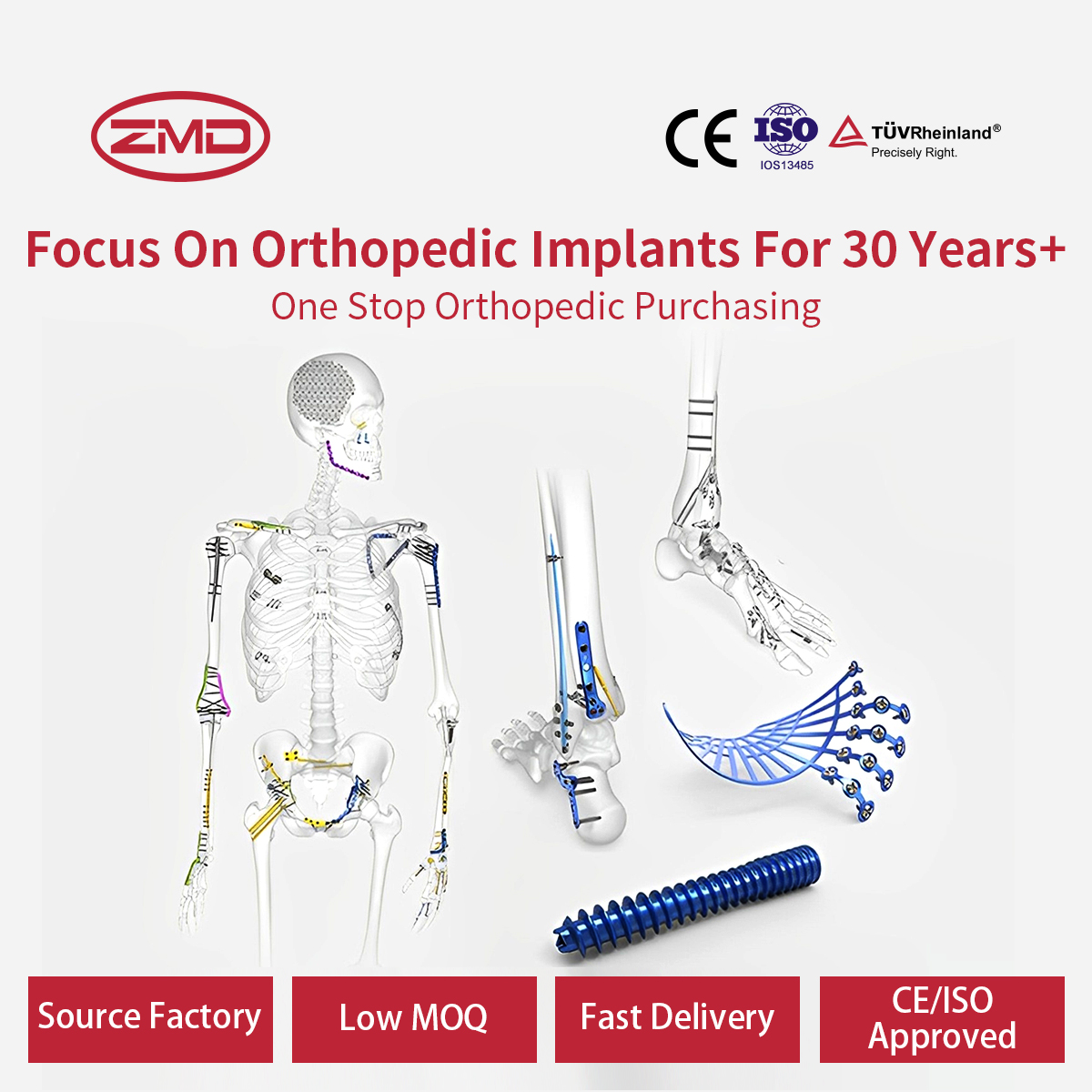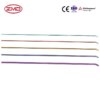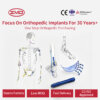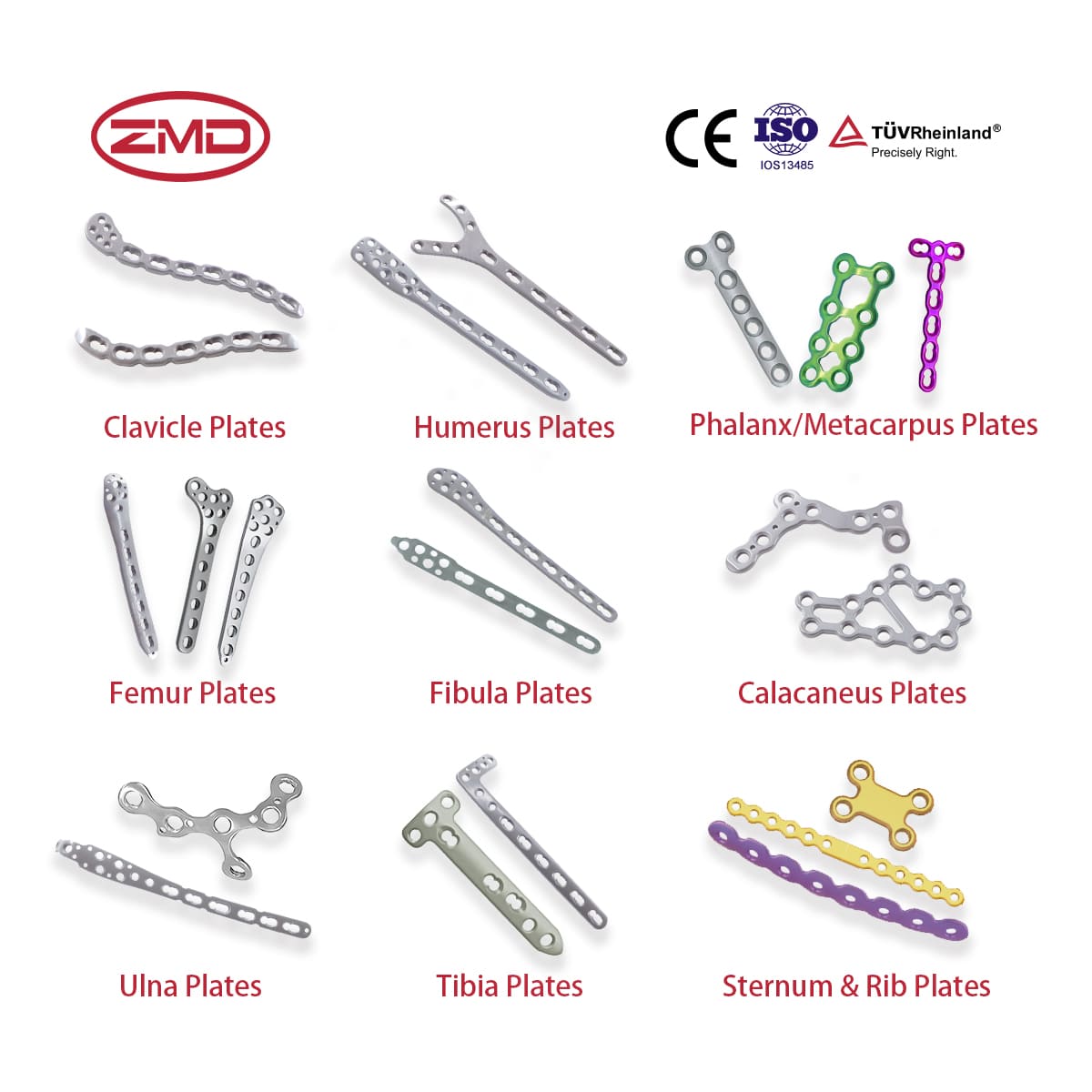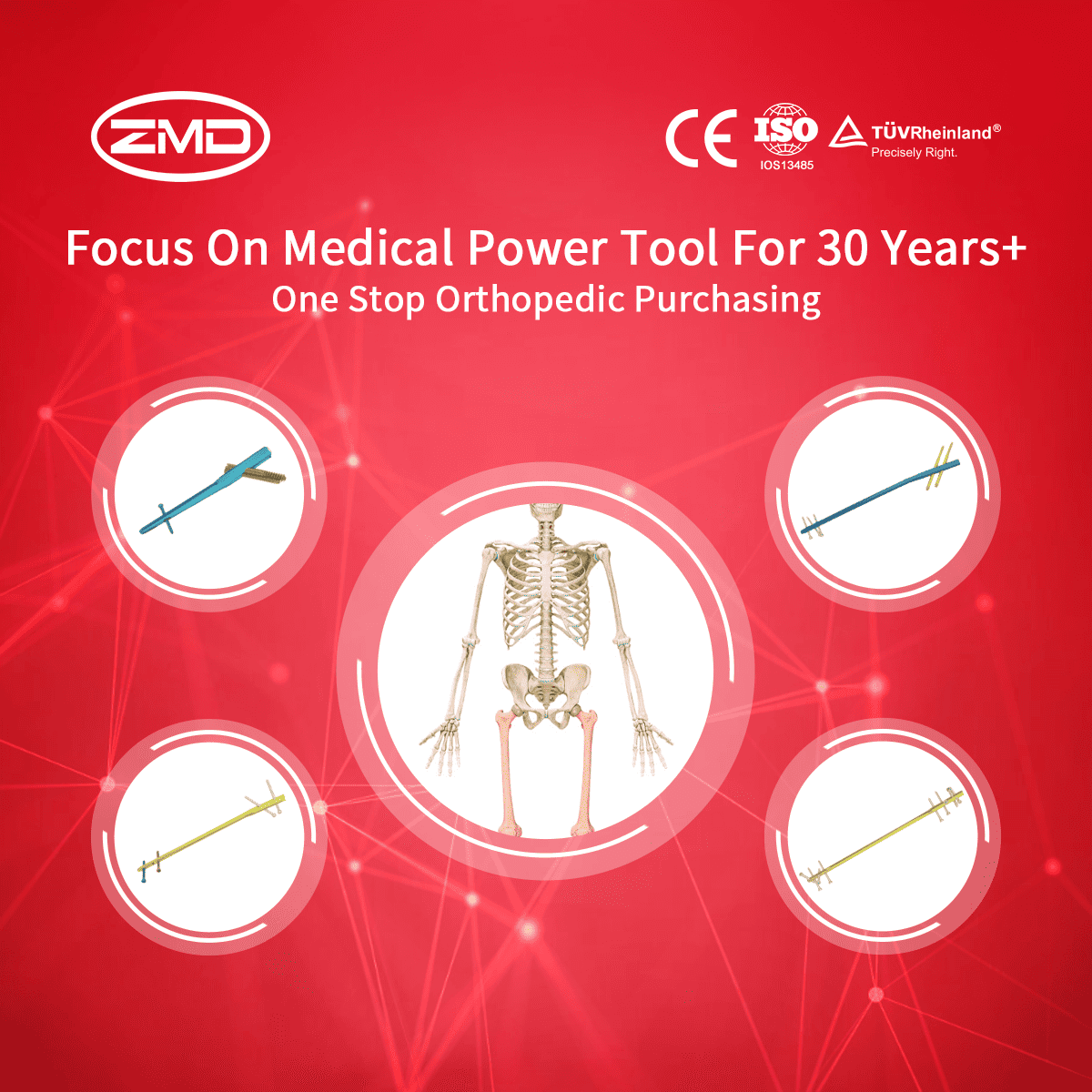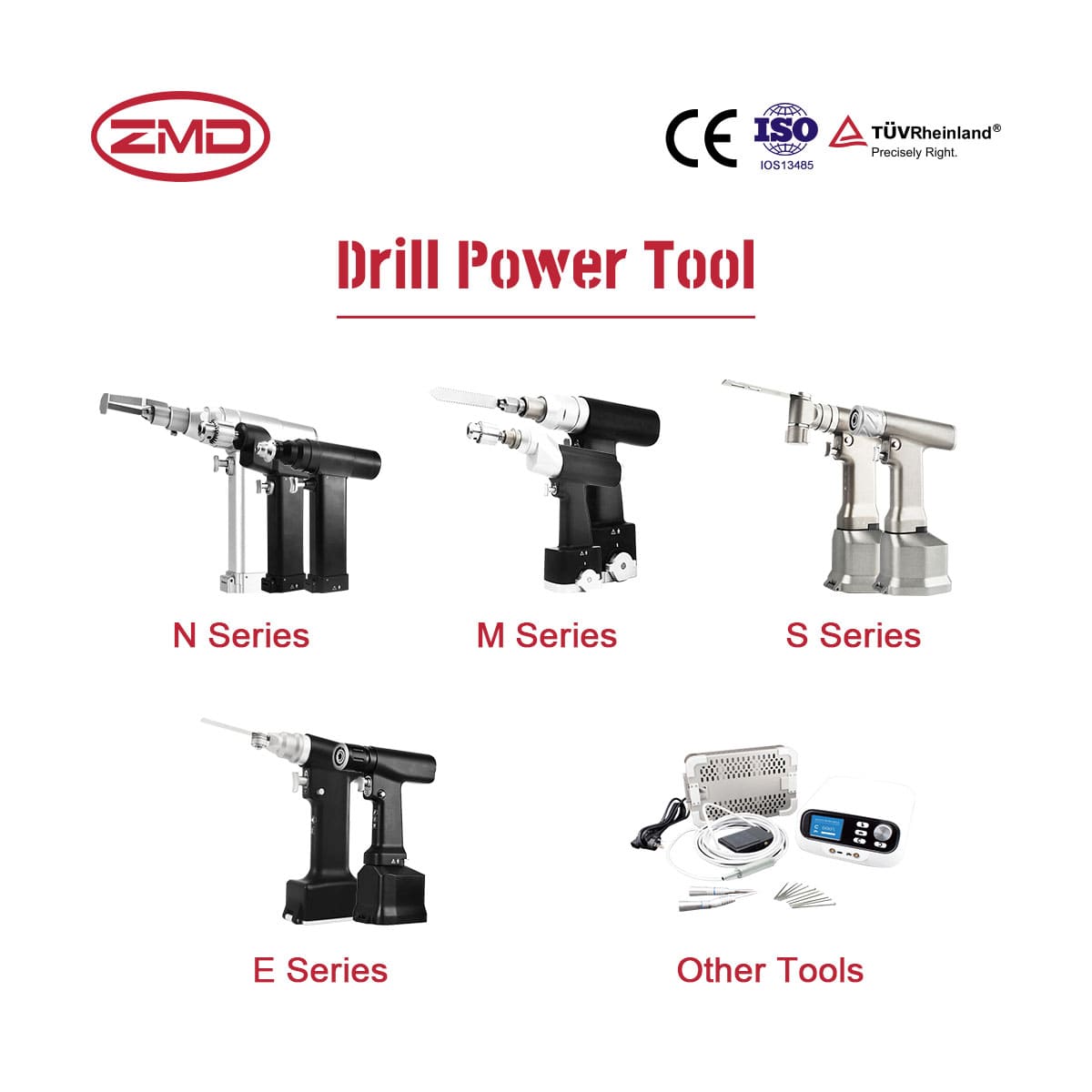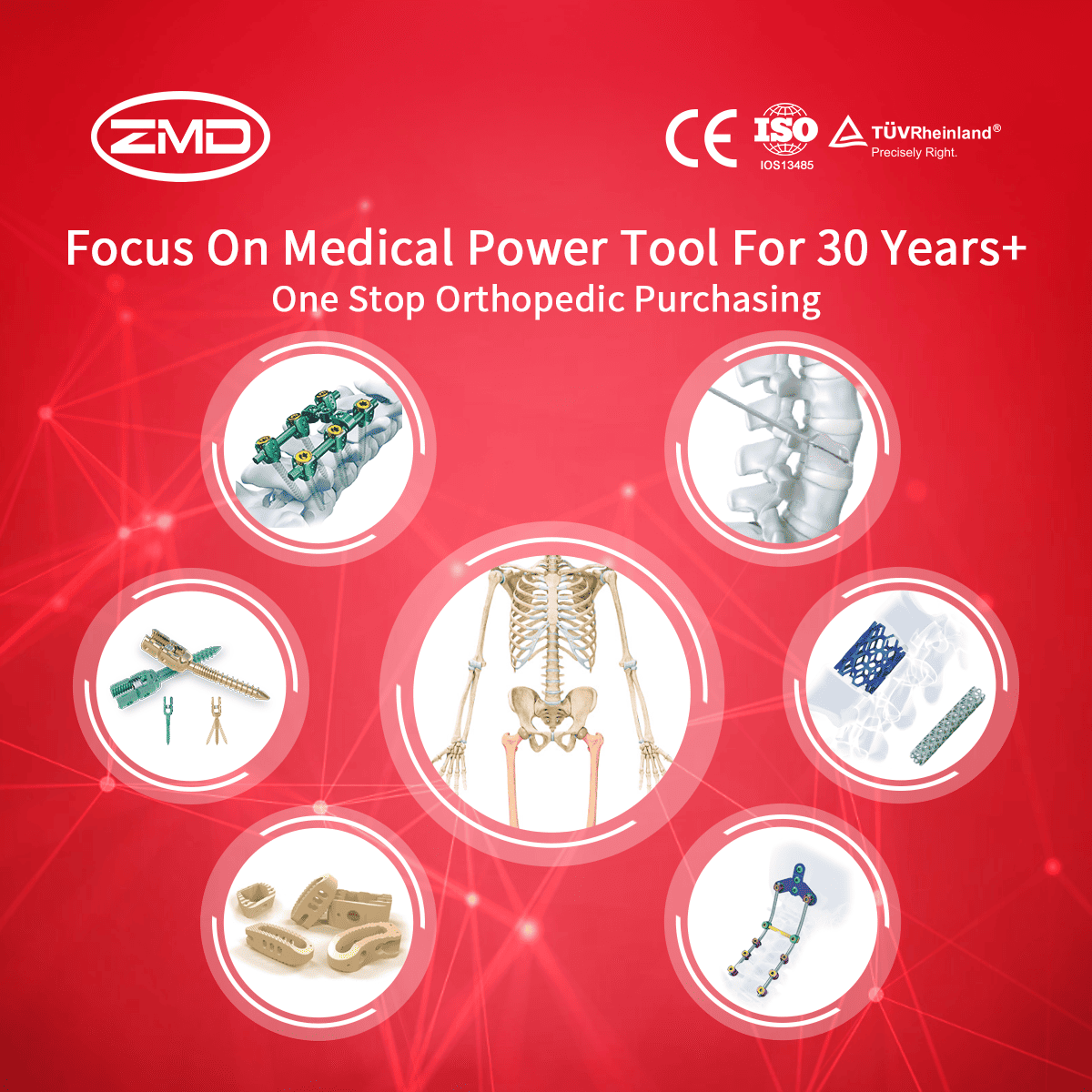| Code |
Product name |
Size |
| 50209 |
Elastic Nail |
1.5mm*440mm |
| 50209 |
Elastic Nail |
2.0mm*440mm |
| 50209 |
Elastic Nail |
2.5mm*440mm |
| 50209 |
Elastic Nail |
3.0mm*440mm |
| 50209 |
Elastic Nail |
3.5mm*440mm |
| 50209 |
Elastic Nail |
4.0mm*440mm |
Key Features and Benefits of Elastic Nail
The Elastic Nail offers a unique and innovative solution for fracture fixation, combining the strength of a traditional nail with enhanced flexibility. This flexibility allows the nail to adapt to various fracture patterns and patient anatomies, reducing stress on the bone and promoting optimal healing. The elastic design minimizes bone canal damage and provides greater comfort for patients, potentially leading to faster recovery and improved outcomes. Crafted from biocompatible materials, the Elastic Nail ensures seamless integration with the body’s natural healing process.
Indications for Elastic Nail
The Elastic Nail is a versatile implant designed for treating a wide range of fractures. Its primary indications include:
- Complex fractures: Fractures with multiple fragments, comminution, or significant bone loss.
- Osteoporotic fractures: Fractures in patients with weakened bone density.
- Pathological fractures: Fractures caused by underlying bone diseases.
- Nonunion of fractures: Fractures that have failed to heal.
- Revision surgery: Replacement of failed internal fixation devices.
- Challenging fracture patterns: Fractures that require greater flexibility and adaptability.
How an Elastic Nail Works
An Elastic Nail is a specialized intramedullary nail designed to provide flexible fixation and support for fractures. Its unique elastic properties allow it to adapt to various fracture patterns and patient anatomies, reducing stress on the bone and promoting optimal healing. The nail is inserted into the medullary canal of the femur and secured in place using locking screws. The elastic nature of the nail allows for slight bending and deformation, distributing forces more evenly across the fracture site and minimizing the risk of implant migration. This flexibility can be particularly beneficial in cases where rigid fixation may be challenging or could lead to complications.
FAQ
Q1: What is an Elastic Nail?
An Elastic Nail is a specialized intramedullary nail designed for fracture fixation, offering enhanced flexibility and adaptability compared to traditional rigid nails.
Q2: What is the benefit of the elastic design?
The elastic design allows the nail to adapt to various fracture patterns and patient anatomies, reducing stress on the bone and promoting optimal healing.
Q3: What materials are typically used for Elastic Nails?
Elastic Nails are often made from high-grade titanium alloys, known for their biocompatibility, strength, and flexibility.
Q4: In which types of fractures is an Elastic Nail suitable?
Elastic Nails are suitable for a wide range of fractures, including complex fractures, osteoporotic fractures, and nonunion cases.
Q5: How does an Elastic Nail differ from a traditional rigid nail?
The Elastic Nail’s flexibility allows it to adapt to changes in bone alignment and load-bearing, reducing the risk of implant migration and promoting better healing.
Q6: What are the potential benefits of using an Elastic Nail over a traditional nail?
Benefits include enhanced stability, reduced stress on the bone, improved patient comfort, and potentially faster healing.
Q7: Are there any risks associated with using an Elastic Nail?
As with any surgical implant, there are potential risks such as infection, hardware failure, and nerve damage. However, these risks are generally low when the procedure is performed by an experienced surgeon.
Q8: How long does it typically take for a bone to heal with an Elastic Nail?
Healing time varies depending on the type of fracture, patient’s overall health, and other factors, but it usually takes several weeks or months.
Q9: What is the recovery process like after Elastic Nail implantation?
Recovery involves rehabilitation to regain mobility and strength. Physical therapy is often recommended to help patients regain full function.
Q10: How does an Elastic Nail compare to other types of intramedullary nails?
Elastic Nails offer a unique advantage in terms of flexibility and adaptability, making them suitable for complex fractures or patients with specific anatomical or physiological conditions.


